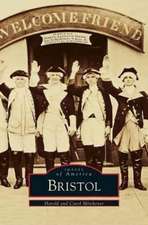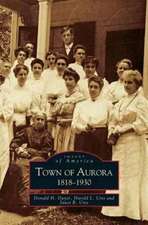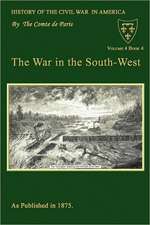The Georgia Gold Rush: Twenty-Niners, Cherokees, and Gold Fever
Autor David Williamsen Limba Engleză Paperback – 31 iul 2003
Preț: 126.71 lei
Nou
Puncte Express: 190
Preț estimativ în valută:
24.25€ • 25.31$ • 20.07£
24.25€ • 25.31$ • 20.07£
Carte disponibilă
Livrare economică 14-28 martie
Preluare comenzi: 021 569.72.76
Specificații
ISBN-13: 9781570030529
ISBN-10: 1570030529
Pagini: 192
Dimensiuni: 153 x 228 x 15 mm
Greutate: 0.34 kg
Editura: University of South Carolina Press
ISBN-10: 1570030529
Pagini: 192
Dimensiuni: 153 x 228 x 15 mm
Greutate: 0.34 kg
Editura: University of South Carolina Press
Textul de pe ultima copertă
In the 1820s a series of gold strikes from Virginia to Alabama caused such excitement that thousands of miners from all parts of the United States poured into the region. This Southern gold rush, the first in U.S. history, reached Georgia with the discovery of the Dahlonega Gold Belt in 1829. Said Benjamin Parks, one of Georgia's first twenty-niners: "The news got abroad, and such excitement you never saw. It seemed within a few days as if the whole world must have heard of it, for men came from every state I had ever heard of. They came afoot, on horseback and in wagons, acting more like crazy men than anything else. All the way from where Dahlonega now stands, to Nuckollsville there were men panning out of the branches and making holes in the hillsides". As it happened, the Georgia gold fields were found to lie in and around Cherokee territory. In 1830 Georgia extended its authority over the area, and two years later the land was raffled off in a lottery. Although they resisted this land grab through the courts, the Cherokees were eventually driven west on the Trail of Tears into what is today northeastern Oklahoma. The gold rush era survived the Cherokees in Georgia by only a few years. The early 1840s saw a dramatic decline in the fortunes of the Southern gold region. When word of a new gold strike in California reached the miners, they wasted no time in following the banished Indians westward. In fact, many Georgia twenty-niners became some of the first California forty-niners. Georgia's gold rush is now almost two centuries past, but gold fever continues. Many residents still pan for gold, and every October during Gold Rush Days hundreds of latter-day prospectors reliving theexcitement of Georgia's great antebellum gold rush throng to the small mountain town of Dahlonega.



















